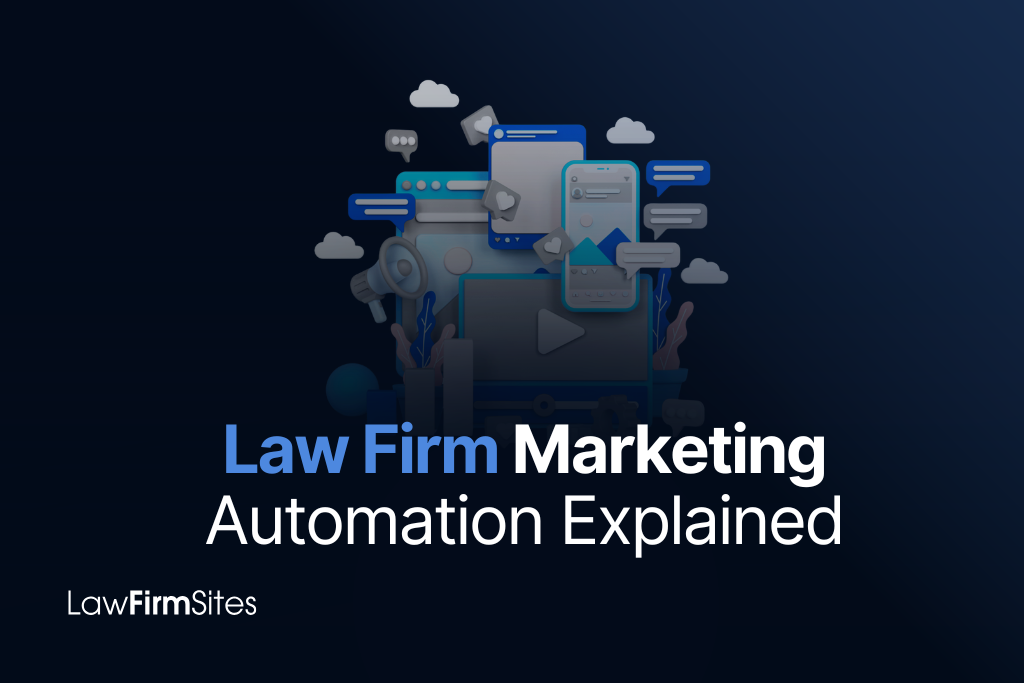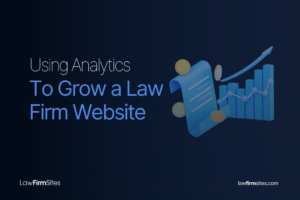Law Firm Marketing Automation Explained

Marketing automation is no longer a buzzword reserved for tech startups. For modern law firms, it is a practical system that helps capture more qualified leads, shorten response times, and measure what truly drives new matters. This guide breaks down the core concepts, shows why automation fits a law firm’s day‑to‑day realities, and outlines a straightforward plan to implement it without disrupting client service.
Law Firm Automation Explained
Law firm marketing automation is the use of software and connected workflows to plan, execute, and measure repetitive marketing and intake tasks with minimal manual effort. The goal is not to replace human judgment but to remove friction from routine steps such as lead capture, email follow‑ups, call scheduling, document requests, and qualification. When configured well, automation ensures that the right message reaches the right person at the right time through email, SMS, chat, and on‑site prompts.
At a practical level, automation links three layers.
- Collections – these involve forms, chat widgets, call tracking, and landing pages that gather names, matters, and timelines in a structured way.
- Orchestration – workflows route each new inquiry to the right intake staff, send confirmations, log source attribution, and trigger reminders when a prospect has not replied.
- Measurement – dashboards show which campaigns, channels, and messages generate consultations and signed fee agreements so leaders can invest with confidence.
Unlike mass marketing blasts, legal automation depends on rules that respect consent, jurisdiction, and the sensitive nature of client information. That means clear opt‑ins, role‑based access to data, and audit trails. It also means careful wording in every template so communications remain compliant with professional responsibility standards. When these safeguards are baked in from the start, automation supports trust rather than undermines it.
Why is There a Need to Utilize Automation for Law Firms?
Most firms lose opportunities not for lack of skill but for lack of timely, consistent follow‑through. Research in professional services shows that responding to new inquiries within minutes dramatically raises the chance of booking a consultation. Studies from technology and services sectors have repeatedly found that fast replies correlate with higher conversion rates and lower lead costs, because prospects tend to choose the first credible option that engages them. In legal contexts, the window can be even shorter when a matter is urgent.
Automation helps close this gap in four ways. First, it standardizes intake so the same high‑quality experience happens every time: immediate confirmation, clear next steps, and a simple path to schedule a call. It then keeps conversations moving through gentle reminders and task prompts, reducing no‑shows and forgotten follow‑ups. Afterwards, it connects marketing to outcomes by tying each signed matter back to its original campaign, which informs better budgeting and forecasting. Finally, it enables personalization at scale by segmenting audiences by practice area, location, and case urgency without adding manual workload.
There are cost and compliance benefits as well. Automated logging of messages and call notes shortens documentation time and makes auditing easier. Centralized templates reduce errors and off‑brand language. Clear consent records help with email and SMS rules. For managing partners, the biggest benefit is visibility: a single view of pipeline health, performance by channel, and how quickly the team is responding.
Key Steps to Implement Law Firm Marketing Automation
Building automation that actually helps your intake begins with mapping the client journey and identifying friction points that slow responses or create drop‑offs. From there, align goals, budgets, and data requirements so your tools connect cleanly and your team knows exactly what to do at each handoff. The following steps translate that plan into daily workflows that speed follow‑ups, protect privacy, and make results measurable.
Understand your firm’s automation needs
Start with current bottlenecks, not software features. Map the journey from first visit to signed agreement for your top practice areas, identifying drop‑off points such as unreturned form submissions, missed calls outside office hours, or prospects who ask for a follow‑up and never receive one. Interview intake staff and partners to learn which tasks consume time but add little strategic value. The result should be a short list of high‑impact use cases such as instant lead acknowledgment, consult scheduling, post‑consult nurturing for undecided prospects, and re‑engagement for former clients.
Define your data model next, then decide which fields are mandatory on every intake form, such as matter type, jurisdiction, timeline, and preferred channel. Agree on a standard taxonomy for sources and campaigns so attribution stays clean. Clarify privacy rules and retention periods, and set user permissions to protect sensitive information. This foundation prevents messy data and ensures that reports will be reliable.
Establish your budget
Costs typically come from three categories: platform licenses, implementation time, and ongoing optimization. All three should be planned. Budget predictably by separating core systems from experimental tools. Core systems often include a CRM or intake platform, an email and SMS provider with compliant opt‑in controls, a scheduling tool, and a call tracking solution. Experimental tools may include AI‑assisted chat, predictive lead scoring, or dynamic site personalization.
When framing value, look at cost per consult and cost per signed matter, not just cost per lead. A platform that improves response time and reduces no‑shows can raise conversion rates enough to pay for itself. Add a small reserve for copywriting, template design, and deliverability work, since message quality strongly influences outcomes.
Determine the best automation tools
Choose tools that integrate cleanly and support legal‑grade privacy controls. A unified intake and CRM system should record every touchpoint, from form fills and calls to emails and texts, while offering secure user roles. Look for native scheduling links, pipeline boards, and automated tasks for attorneys and paralegals. An email and SMS platform should support segmentation by practice area and engagement level, dynamic fields for personalization, and built‑in suppression for opt‑outs.
Round out the stack with call tracking to associate phone inquiries with campaigns, on‑site chat or chatbots that hand off to humans when questions extend into legal advice, and landing page builders for practice‑specific campaigns. For analytics, connect your platforms to a dashboard that reports response time to first touch, booked consultations, show rates, and signed matters by source.
If your firm runs paid search or paid social, ensure that ad platforms receive offline conversion data from signed matters while omitting personally identifiable details. This closed‑loop feedback lets bidding algorithms favor keywords and audiences that correlate with qualified consultations, which can lower acquisition costs over time.
Train your team on using tools and understanding the process
Automation succeeds when humans understand their role within each workflow. Provide a clear playbook that explains triggers, messages, and handoffs. Intake staff should know which alerts require immediate action and how to pause or resume a sequence when a prospect reaches a live person. Attorneys should see pipeline dashboards that show their open tasks, pending consults, and the next recommended step.
Invest time in message quality. Build a library of plain‑spoken templates for confirmations, reminders, retainer follow‑ups, and reviews outreach. Each template should set expectations, invite questions, and use empathetic language. Test subject lines, send times, and channels. Train the team on privacy settings, consent rules, and how to document approvals. A short, recurring session to review results and share what worked will keep the system improving without overwhelming anyone.
How to Produce Quick Wins in Law Firm Marketing?
Welcome and acknowledgment messages reach new inquiries within moments, reassure the sender that the firm received their message, and offer a direct path to schedule. Missed‑call triggers send a text that offers a callback window, which salvages opportunities from busy periods. Consultation reminders go out a day before and an hour before the meeting, reducing no‑shows and keeping calendars on track.
Lead nurturing sequences support prospects who need time to decide. These messages answer common questions, explain process steps, and highlight client education resources such as guides or videos. For former clients, periodic check‑ins and value‑driven newsletters keep the relationship warm and encourage referrals. Review‑request flows that trigger after a successful matter strengthen local SEO and build trust for future visitors.
Compliance and client experience
Automation must serve dignity and confidentiality. Every workflow should be constructed with consent, plain disclosures, and easy unsubscribe options. Messages should avoid legal advice and focus on education, process, and next steps. Role‑based permissions, two‑factor authentication, and audit logs protect sensitive data. Templates should be reviewed through a compliance lens so marketing efficiency never conflicts with professional responsibility.
Client experience improves when automation reduces friction. Clear directions, quick confirmations, and easy scheduling signal respect for the client’s time. Post‑consult summaries and next‑step checklists cut down on confusion. Surveys after key milestones invite feedback and uncover service issues early. These touches build trust and often lead to stronger reviews and referrals.
Measurement and improvement
Automation without measurement is just busywork. Define a small set of metrics that reflect real progress: response time to first touch, percentage of inquiries that book a consultation, show rate, signed matters by channel, and time to retainer. Add a few quality indicators, such as average review rating and client satisfaction survey scores.
For email and SMS, focus on replies and bookings rather than opens alone. For paid media, connect offline outcomes back to ad platforms so optimization is driven by matters, not clicks. Review reports monthly, decide on one change to test, and implement it. Small improvements compound.
Common Automation Challenges that you Should Expect
Teams sometimes fear that automation will make communications feel cold. The cure is human‑first copy and clear handoffs. Write like a person, sign messages from a named team member, and prompt a live call when a prospect asks a specific legal question. Automation should open the door to a conversation, not replace it. Here are a few notes to keep in mind:
- Data quality presents another hurdle. Inconsistent fields, duplicate contacts, and messy source names can break reports and trigger the wrong messages. Solve this with standardized forms, required fields for critical data, and routine data hygiene. Keep integrations simple at first; only connect systems that provide clear value. As confidence grows, expand connections with a watchful eye on privacy.
- Deliverability can suffer if lists are old or permission is unclear. Protect sender reputation by sending only to opted‑in contacts, warming up new domains gradually, and pruning inactive subscribers. For SMS, follow carrier guidelines, register sending numbers where required, and keep messages concise and helpful. Respect quiet hours and always provide an easy way to stop messages.
- Change management is a quiet challenge in many firms. New tools alter habits, and busy teams default to old workflows. Address this by appointing a process owner, offering short training sessions, and celebrating small wins such as faster response times or higher show rates. When attorneys see time saved and clients served more smoothly, adoption follows.
Final Law Firm Marketing Automation Notes
Once the basics run smoothly, firms can layer on more sophisticated programs. Predictive scoring can rank inquiries by urgency using signals such as practice area, jurisdiction, and response behavior. Dynamic website content can display different messages for returning visitors versus first‑time visitors. Chat tools can answer routine questions and hand off to humans for sensitive issues. With proper consent, remarketing can re‑engage site visitors who viewed a practice page but did not book.
Firms with multiple locations or practice groups can set up shared frameworks with localized content. Central oversight maintains consistency in compliance and reporting, while each group customizes messages to address common questions from their community. This balance preserves brand standards and allows authentic communication.
Establish a Clear and Efficient Automation
Law firm marketing automation is about clarity, speed, and service. By removing friction from intake and follow‑up, firms respond faster, educate more effectively, and invest with better data. A thoughtful rollout that respects privacy and emphasizes helpful, human language will strengthen trust and lead to more qualified matters. Law Firm Sites can help you build a program that supports your goals without adding busywork.
Did you like this post? Here are some others you might enjoy:

For most law firms, growth depends on being visible at the exact moment a potential client searches for help. Pay‑per‑click…

Strong legal marketing rewards depth. When potential clients face high-stakes decisions, they search for thorough, trustworthy guidance that clearly explains…

Data is the most reliable guide for growing a law firm website because it shows what clients actually search, where…

